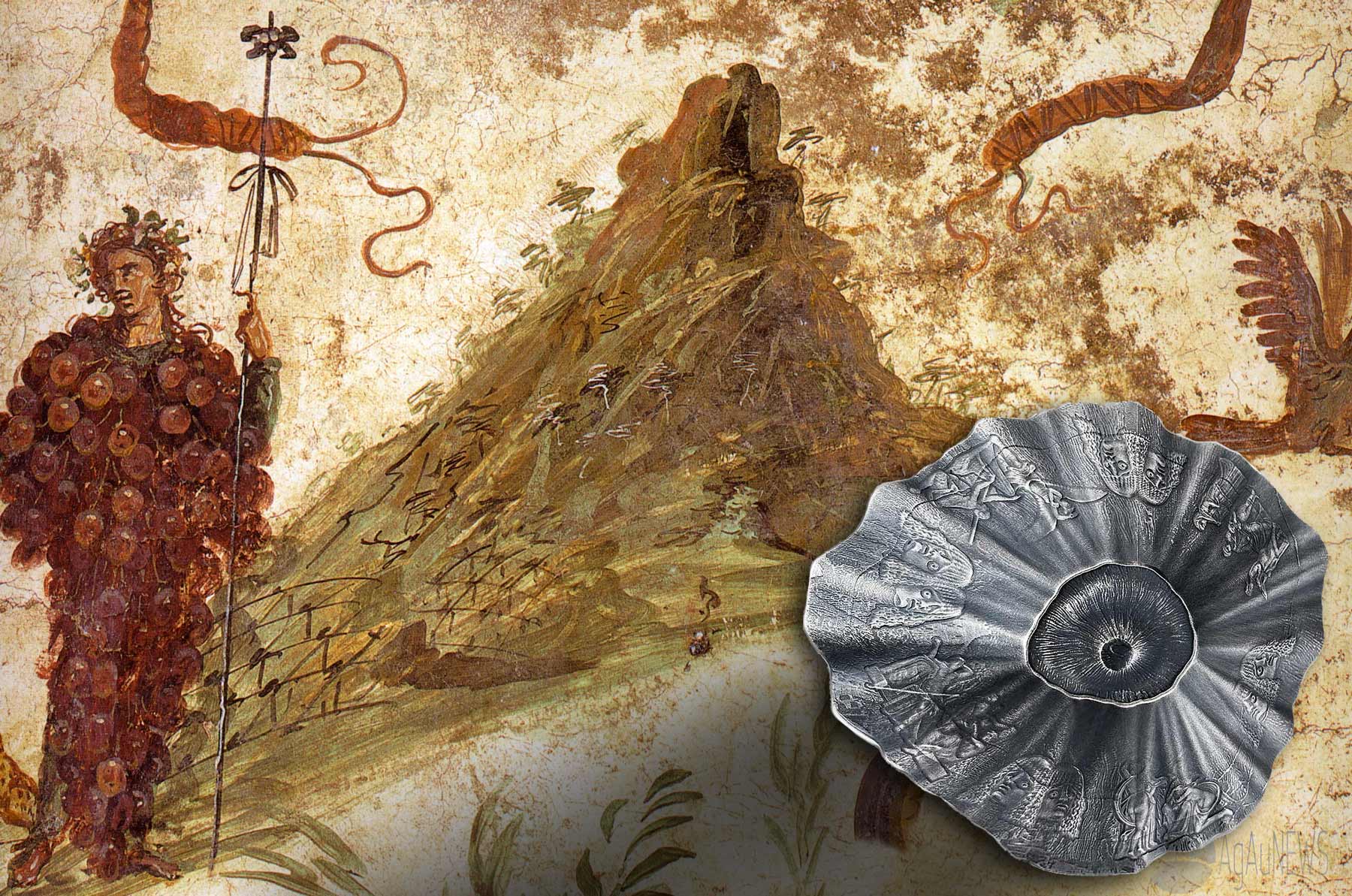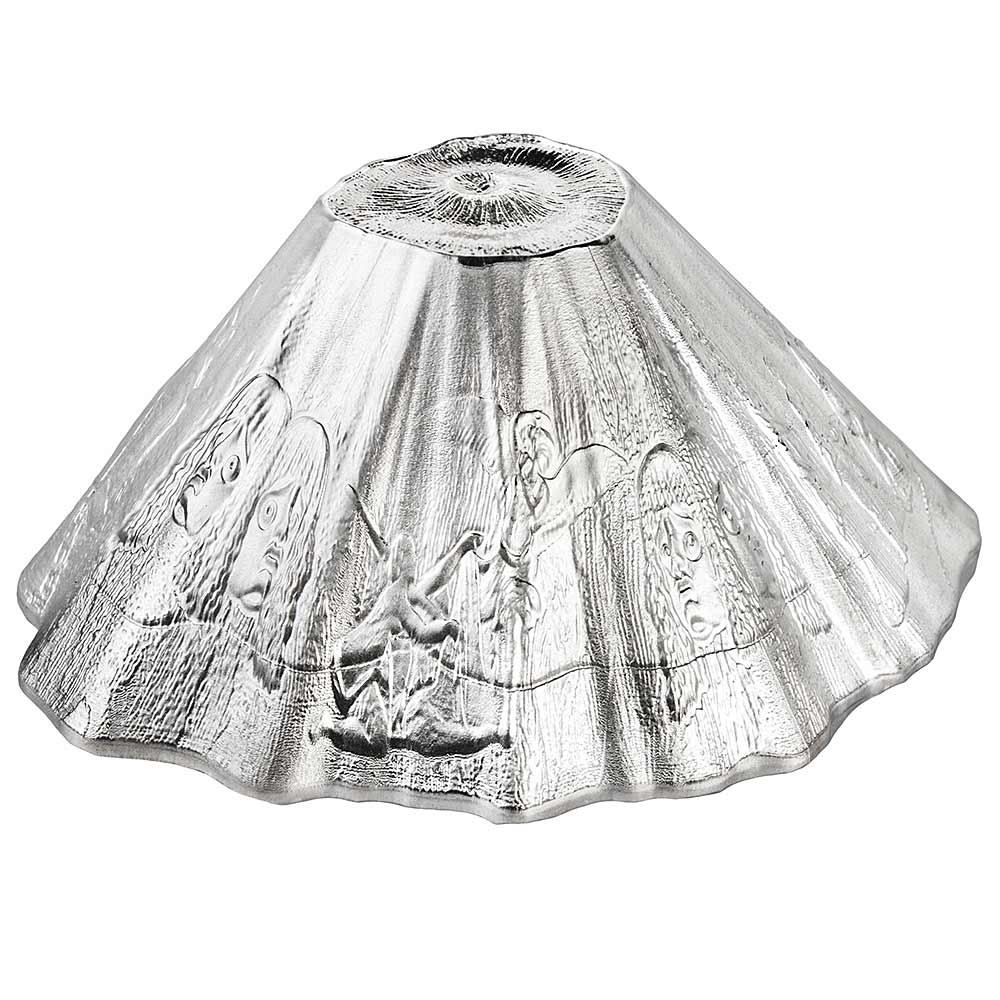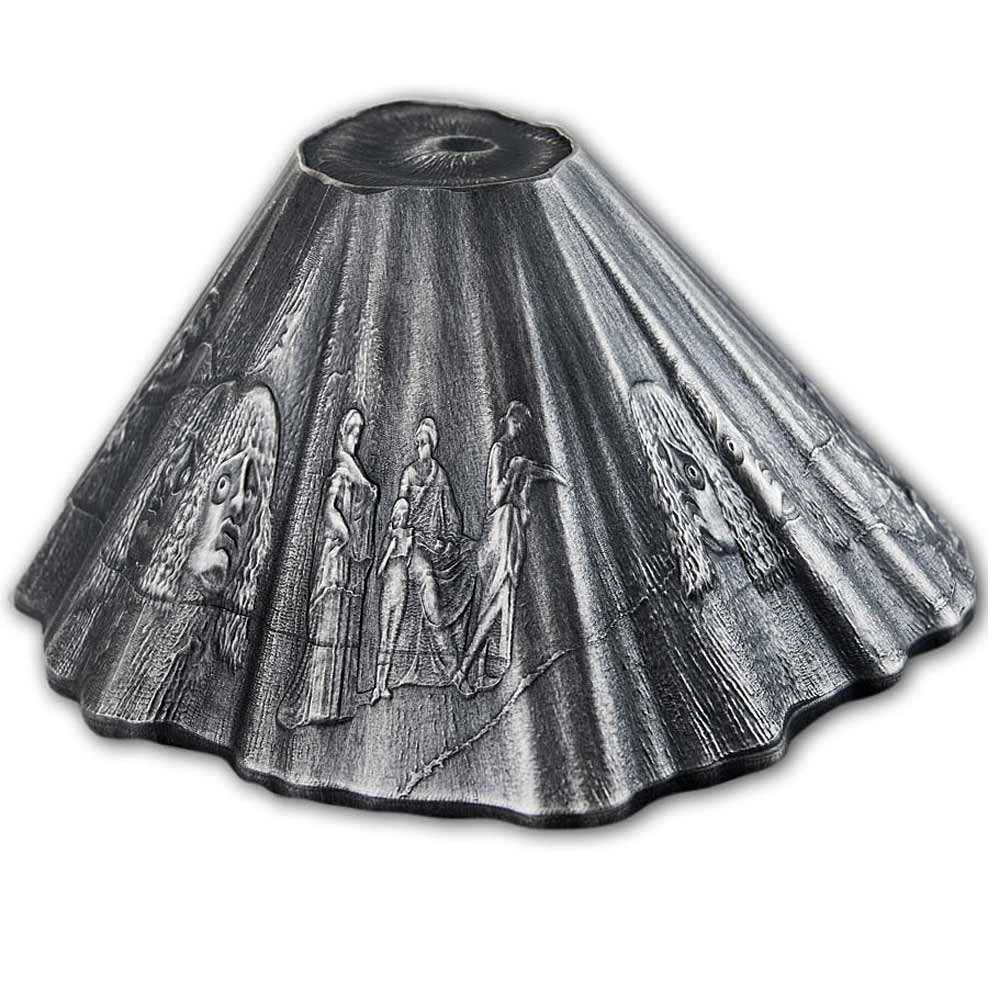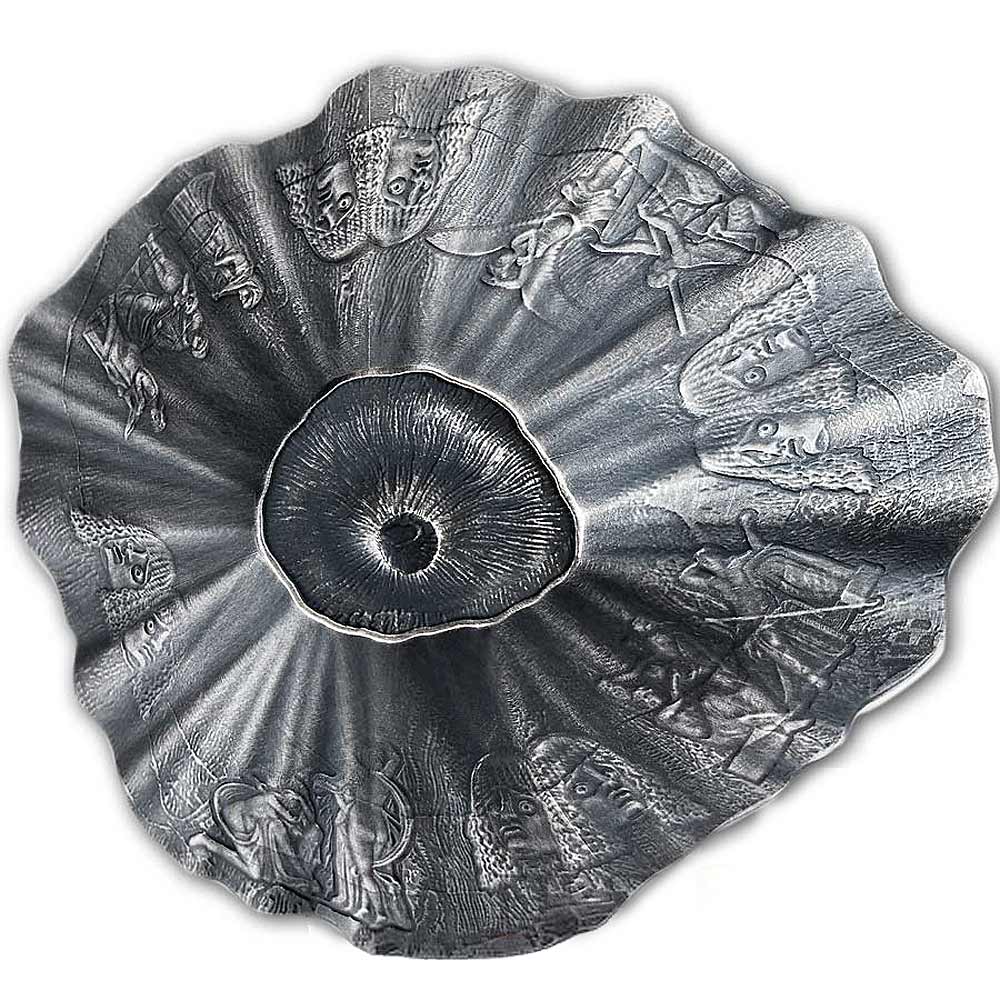As we said in our earlier article, the Mint of Poland takes the opportunity at every recent World Money Fair in Berlin to showcase for release a ‘spatial’ coin, one that is heavily three dimensional. To date we’ve had the Fortuna Redux cylindrical coin, the beautiful Pyramids of Egypt, the exploded ‘cuboid’ Pope John Paul II, the spherical New 7 Wonders of the World, and the paper mimicking Chopins Score. This year saw the Trans-Siberian Easter Egg coin, and the re-appearance of one shown in 2015 in prototype form, Vesuvius.
While the previous spatial coins were all fundamentally geometric shapes (cylinder, sphere, cube, etc.), this new Vesuvius coin has a quite unique form, that of a volcano. The complexities of striking something this shape while keeping the intricate surface details undistorted would be beyond most mints, but the Mennica Polska has progressed to this level through several releases.
It’s a interesting design, certainly pushing the boundaries of what many would label a coin, and the decision to decorate the ‘reverse’ area with fresco elements from the magnificent Villa of the Mysteries is a fine one in theory, but perhaps in conjunction with the ‘mountain’ texture applied everywhere, it’s a little busy. Having been to Pompeii and the villa itself, I can see the appeal of the subject and it’s beautifully packaged in the Fortuna Redux style display box. It’s issued for Niue, so carries the effigy of Queen Elizabeth II on the obverse / underside. There’s an appropriate mosaic-style pattern struck into this face that looks great.
In addition, it’s possible to buy the coin in an antique finish, initially by request to the mint, but some dealers have obviously taken the initial step in having some made available. Which you prefer is a matter of taste, but the 600 mintage remains a total of both versions, not 600 of each. Unlike the Trans-Siberian Egg coin, there’s no gilded variant. An ambitious coin without doubt, the limited 600 mintage and 6 oz weight mean it’s never going to be a budget item. Quite a few dealers in Europe and North America have these, and they seem to be just under the €1000 / $US1000 mark. We have noted that APMEX have them on sale for $695.00, a significant saving and well worth a look at that price.
PROOF FINISH
MINTS DESCRIPTION
MOUNT VESUVIUS
Probably the most famous volcano in the world, Mount Vesuvius sits in the densely populated Gulf of Naples in Italy, home to around 3,000,000 people. Part of the Campanian Volcanic Arc, this 1,281m tall stratovolcano consists of a large cone partially encircled by the steep rim of a summit caldera caused by the collapse of an earlier and originally much higher structure called Monte Somma.
Vesuvius has erupted many times since and is the only volcano on the European mainland to have erupted within the last hundred years. The caldera started forming during an eruption around 17,000 (or 18,300) years ago and was enlarged by later paroxysmal eruptions ending in the one of AD 79. This structure has given its name to the term “somma volcano”, which describes any volcano with a summit caldera surrounding a newer cone.
In the year of 79 AD, Mount Vesuvius erupted in one of the most catastrophic and famous eruptions of all time. Historians have learned about the eruption from the eyewitness account of Pliny the Younger, a Roman administrator and poet.
Mount Vesuvius spawned a deadly cloud of stones, ash and fumes to a height of 33 km (20.5 mi), spewing molten rock and pulverized pumice at the rate of 1.5 Mt/s, ultimately releasing a hundred thousand times the thermal energy released by the Hiroshima bombing. The towns of Pompeii and Herculaneum were destroyed by pyroclastic flows and the ruins buried under dozens of feet of tephra. An estimated 16,000 people died from the eruption.
VILLA OF THE MYSTERIES
The Villa of the Mysteries is a well-preserved suburban Roman villa on the outskirts of Pompeii, southern Italy, famous for the series of frescos in one room, which are usually thought to show the initiation of a young woman into a Greco-Roman mystery cult. These are now probably the best known of the relatively rare survivals of Ancient Roman painting. Like the rest of the Roman city of Pompeii, the villa was buried in the eruption of Mount Vesuvius in 79 and excavated from 1909 onwards (long after much of the main city).
Although covered with metres of ash and other volcanic material, the villa sustained only minor damage in the eruption of Vesuvius in 79 AD, and the majority of its walls, ceilings, and most particularly its frescoes survived largely undamaged. Since its excavation the roofing and other parts of the house have been maintained as necessary.
The Villa is named for the paintings in one room of the residence. This space may have been a triclinium, and is decorated with very fine frescoes, believed to be painted in the early-middle 1st century. Although the actual subject of the frescoes is hotly debated, the most common interpretation of the images is scenes of the initiation of a woman into a special cult of Dionysus, a mystery cult that required specific rites and rituals to become a member.
As in other areas of Pompeii and Herculaneum, a number of bodies were found in this villa, and plaster-of-Paris casts were made of them.
PROOF DETAILING
ANTIQUED VERSION
SPECIFICATION
| DENOMINATION | COMPOSITION | WEIGHT | DIMENSIONS | FINISH | MINTAGE | BOX / COA |
|---|---|---|---|---|---|---|
| $30 NEW ZEALAND | 0.9999 SILVER | 186.62 g | 54 x 49 x 21 mm | PROOF/ANTIQUE | 600 | YES / YES |

















Call me old fashioned, but I really don’t understand how these “spatial” pieces of silver or other precious metal, can be called coins! If I stamp a $2 sign and the effigy of the queen on my grandmother’s silver tray or teapot, does that make them “coins” too? :-p
Same for all the other weirdly shaped “coins”, be it maps of Australia, maple leaves, posters etc etc… Not denying the craftsmanship and that antiqued version of the Faberge Egg was magnificent, but com’on! Each to their own though I guess and I know a lot of these are very popular.